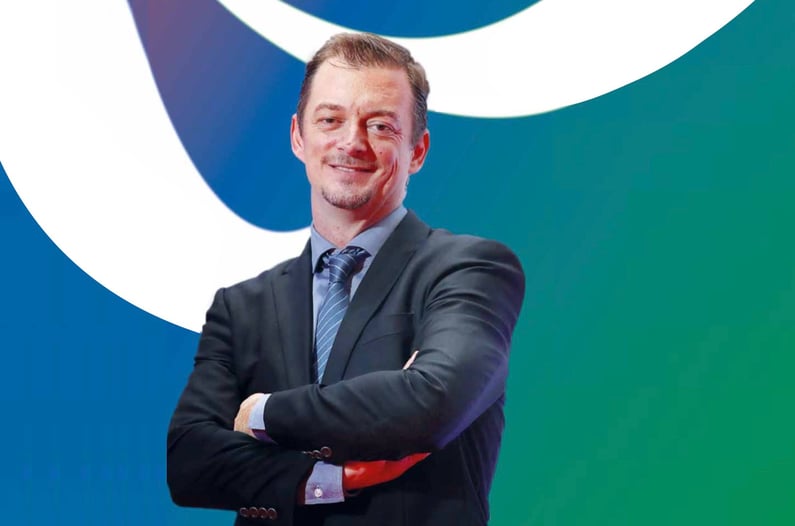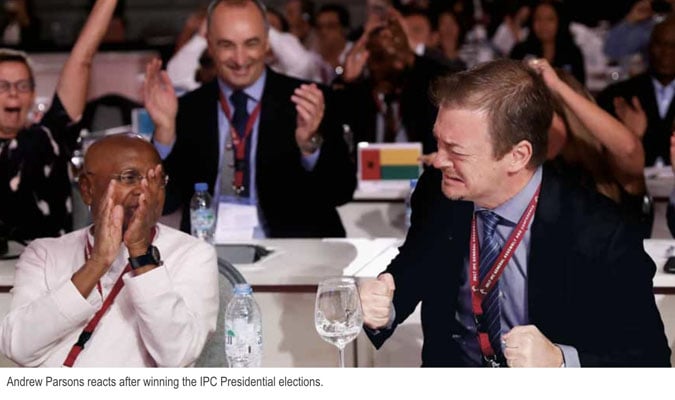Search the latest and greatest job opportunities in sport

On the 8th September 2017, Mr Parsons, with 84 votes, was chosen ahead of fellow candidates China ’ s Haidi Zhang (47 votes), Denmark ’s John Petersson (19) and Canada’ s Patrick Jarvis (12) to become the third President in the history of the IPC. We find out more about what life has been like since his appointment and his plans for the future of the International Paralympic Movement.
It was anything but a quiet start to life as IPC President for Parsons. “A very busy one,” he said about his first week. “Really busy, but fantastic.”
Strengthening relationship with the International Olympic Committee
Just days after winning the election, Parsons flew to Lima, Peru, to attend the 131st IOC Session.
It was a time filled with meetings including with IOC President Thomas Bach, site visits with the organising committee of the Lima 2019 Pan Am and Parapan Am Games, introductions with the “Olympic world” and “fantastic moments,” especially the ratification of Paris 2024 and Los Angeles 2028 as the next Olympic and Paralympic hosts.
Attending the IOC Session was more than a formality. It was the start of his presidency for building on the IPC’s relationship with the IOC. Back in June 2001, a co-operation agreement was signed aimed at protecting the organisation of the Paralympic Games and securing the practice of “one bid, one city.” It is an agreement that has been extended over the years and in 2016, principles for a new agreement through to 2032 were agreed upon. These included increasing the visibility of the Paralympics and enhancing its brand; and ensuring the financial stability and long-term viability of the IPC, the Paralympic Games and the Paralympic Movement.

But Parsons said the IPC-IOC relationship is “not only about the Games.”
“We want to have a closer relationship with what I would say is the Olympic Movement as a whole because I think that, for example, the regional organisations can benefit from the partnership – for example – with the Americas Paralympic Committee and PASO (Pan American Sport Organisation) when it comes to the Parapan American Games,” Parsons said.
He has seen how a partnership with both Movements made a difference at a regional level, for example, in the National Olympic Committee (NOC) in Chile helping in build an NPC for the country from scratch.
“We saw how the support of the NOC was important from the beginning,” Parsons said. “So it’s not only about the IOC-IPC, it’s broader than that.”
Supporting members, supporting Para athletes
Parsons said one of the changes he would make with the IPC and the Paralympic Movement is how the IPC supports its 202 members, which include NPCs, International Federations (IFs), Regional Organisations and International Organisations of Sport for the Disabled (IOSDs).
He wants the IPC, as the global governing body of the Paralympic Movement, to be more proactive rather than reactive to its members, and to better understand their needs and challenges.
“As a member organisation, we exist to serve our membership, and together we can provide the best path for the Para athletes of the world,” Parsons said.
It is a belief that stems from his nearly 20 years working at an NPC. Additionally, with his educational background, Parsons also said to expect more communications and marketing initiatives from the IPC to help members develop.
“It’s not only about communication and marketing with the IPC, but how we can better support the NPCs and IFs in these fields ... We have members who are very well established in these programmes but I would say a huge majority of our members still don’t have it.”
He wants to see the IPC provide more solutions and coordinate efforts between IFs and NPCs, between NPCs and regions, and so on, not only in communications and marketing, but “everything to do with development and high performance.”
Introducing new ideas
In his manifesto, Parsons introduced two new points that would be new for the Paralympic Movement: professionalising the athlete classification process, with closer monitoring of classifiers and performances; and a Youth Paralympic Games.
“None of them will be easy at all,” Parsons said. “We see more and more issues around classification. As we are a more relevant organisation, we are more open to the external world discussing classification, challenging classification. ... It is very important for them that classification is understandable, that it can be trusted. So I think we have a lot to do when it comes to classification being more friendly.”
Parsons said it is not only the outside world, but also within the Movement where classification issues need to be tackled.
To do so, he said the IPC needs to work very closely with IFs and the Classification Committee to find solutions. As part of his first weeks in the Presidency, Parsons attended the VISTA 2017 conference in Toronto, Canada, and took the opportunity to meet with the IPC Classification Committee and “debate with them these challenges.”
“We also have a problem with how we communicate classification, and how we position classification within the Paralympic Movement and the outside world,” Parsons said.
As for the first Youth Paralympic Games, Parsons said he is proposing to simply start discussions about those Games. First, he needs to understand what the membership expects from these Games, such as how many sports should feature and whether there should be collaboration with the Youth Olympic Games.
This article was originally published by our partner The International Paralympic Association (IPC) in their publication ‘ The P aralympian ’.
Search the latest and greatest job opportunities in sport
In the world of professional sports, sponsorship represents a significant source of revenue and plays a vital role for t...
Read moreThe sports industry is a vibrant and multifaceted industry, made up of a diverse range of sectors that shape its global ...
Read morePablo Romero, director of protocol at Sevilla FC and lecturer in the UCAM Master's Degree in Sports Management, shares t...
Read more